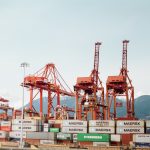In the vital mission for wildlife conservation and world rescue,the impact of illegal wildlife trade on endangered species stands as a distressing and urgent concern. This article delves into the profound repercussions of the illicit trade,which places endangered species on the precipice of extinction. By understanding the gravity of this issue and its far-reaching consequences,we can rally together in the collective effort to combat illegal wildlife trade and safeguard our planet’s threatened biodiversity.
The Illegal Wildlife Trade
The illegal wildlife trade represents a global crisis,involving the unlawful trafficking of endangered species,animal parts,and products. Fuelled by demand for exotic pets,traditional medicines,and luxury goods,this illicit trade poses a grave threat to the world’s most vulnerable species.
Endangered Species at Risk
The impact of illegal wildlife trade is acutely felt by endangered species such as elephants,rhinos,tigers,and pangolins. These magnificent creatures face relentless poaching for their ivory,horns,skins,and scales. As a result,their populations dwindle,pushing them closer to the brink of extinction.
The Ecological Toll
Beyond the plight of individual species,the illegal wildlife trade wreaks havoc on ecosystems and their delicate balance. Endangered species often play pivotal roles in maintaining ecological harmony. Their loss can trigger cascading effects,affecting vegetation,predator-prey dynamics,and overall ecosystem health. The threat of ecological collapse looms in regions where poaching runs rampant.
The Human Connection
Illegal wildlife trade isn’t just a threat to animals; it also endangers humans. The trade can facilitate the transmission of zoonotic diseases,posing a direct threat to public health. Furthermore,communities in regions where wildlife is poached often suffer social and economic consequences,including the loss of livelihoods and tourism revenue.
Conservation Efforts
Despite the dire situation,there is hope. Conservation efforts are underway worldwide to combat illegal wildlife trade. Anti-poaching initiatives,wildlife law enforcement,and community-based conservation programs have made significant strides in protecting endangered species. Success stories abound,with rescued animals finding sanctuary and confiscated contraband items removed from circulation.
The Role of Global Cooperation
Addressing the illegal wildlife trade necessitates global cooperation and policies. Organizations like INTERPOL and the Convention on International Trade in Endangered Species of Wild Fauna and Flora (CITES) play pivotal roles in combatting wildlife crime. Collaborative efforts among nations are essential to effectively combat the trade and bring wildlife traffickers to justice.
Conclusion
The illegal wildlife trade’s impact on endangered species serves as a stark reminder of the urgency to take action. The world rescue mission includes protecting these vulnerable species and preserving our planet’s biodiversity. Whether through supporting conservation organizations,advocating for stronger regulations,or raising awareness,individuals and nations can contribute to the fight against illegal wildlife trade. Together,we can ensure a future where these remarkable species continue to thrive in their natural habitats.





